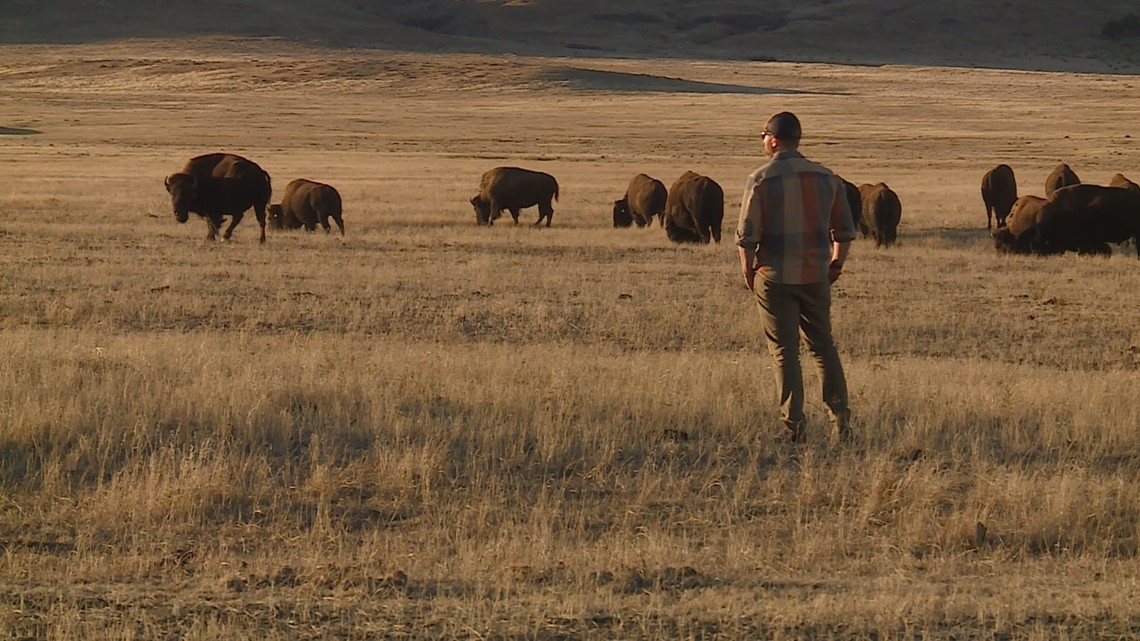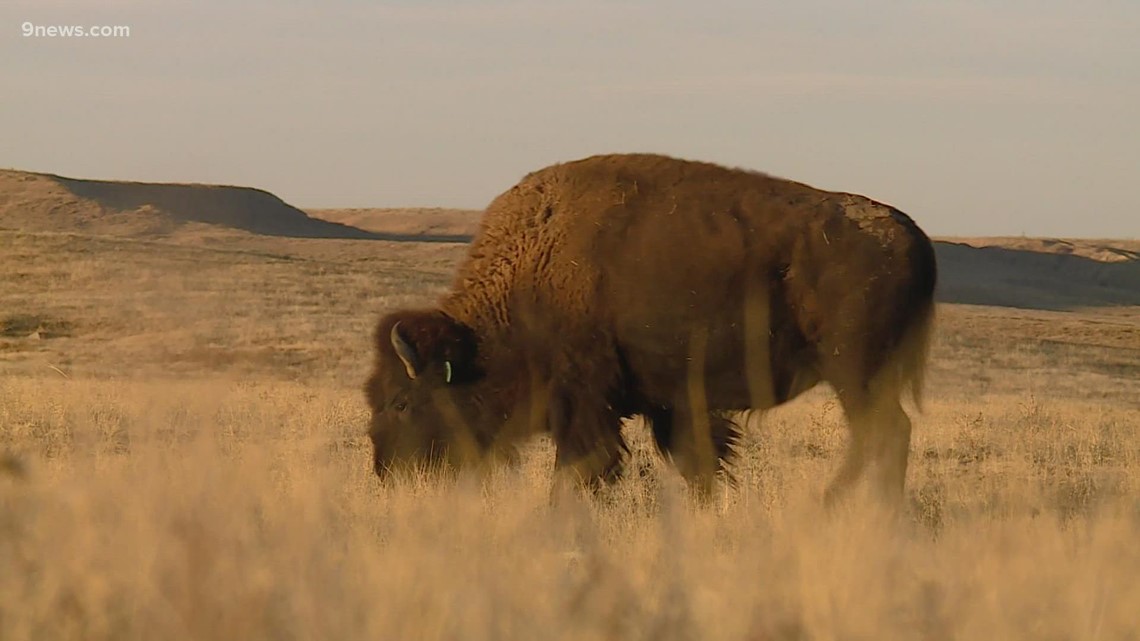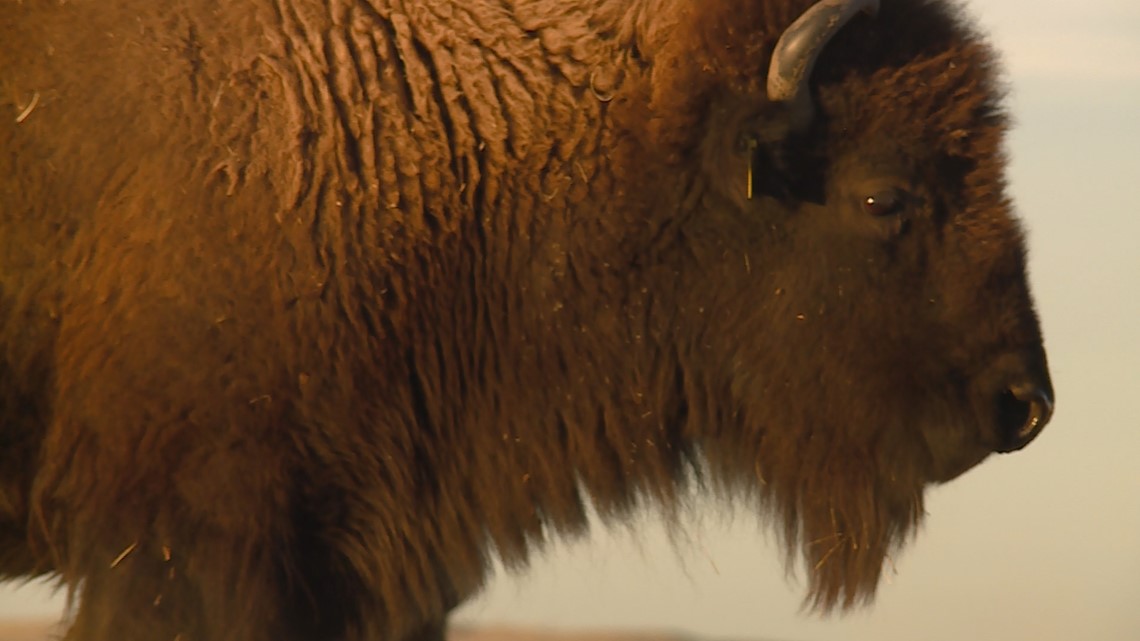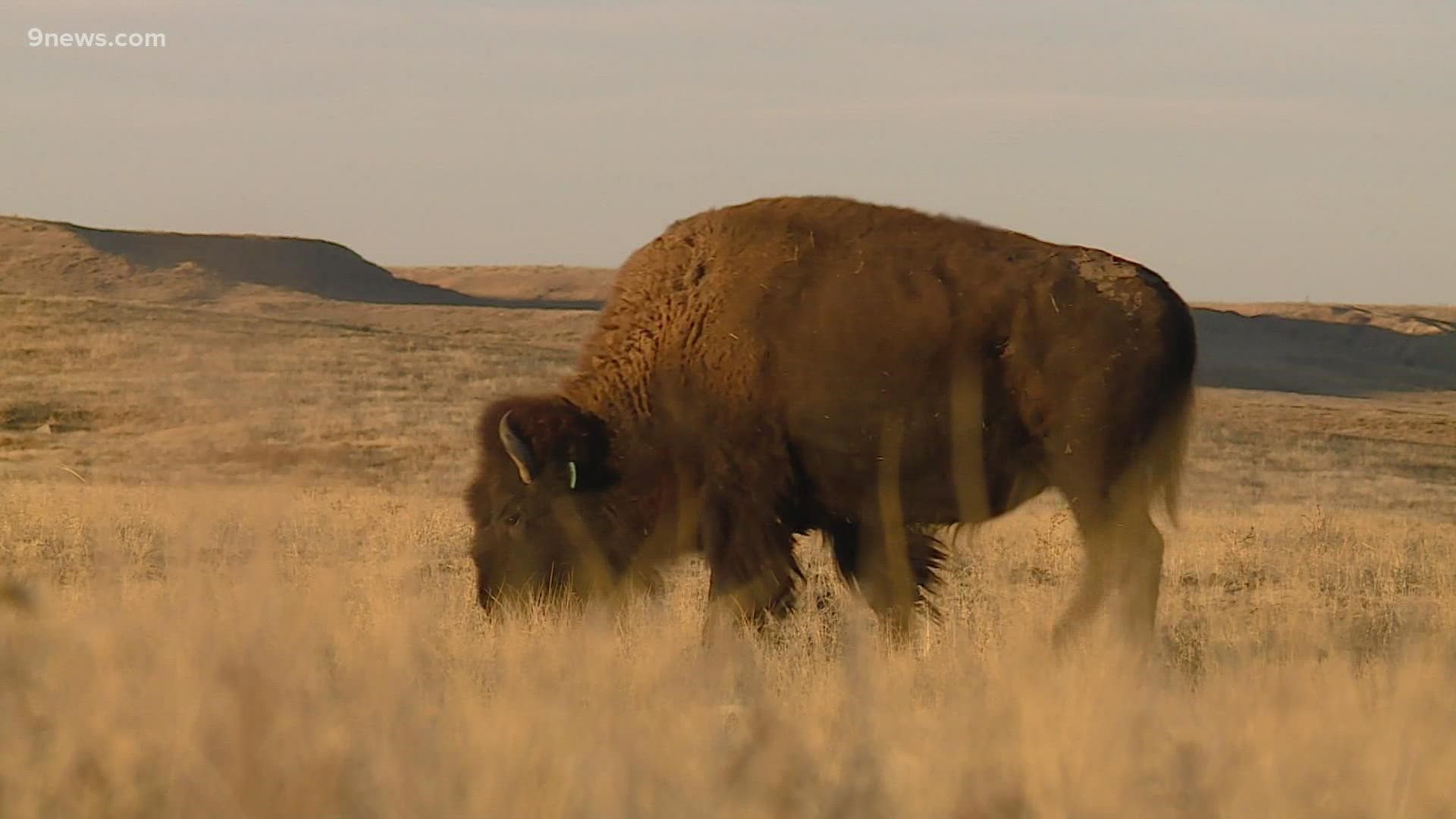STRASBURG, Colo. — There were once more than 50 million bison roaming the great plains of America in the late 18th century. Those numbers are down to just a fraction of that today, and it may be no coincidence that the health of the grasslands have also dwindled right along with the decline of the animals.
One Colorado ranch is trying to regenerate soil by rekindling the relationship between the grass and the grazer.
“Being out here on the shortgrass prairie, watching bison just grazing about,” said rancher Bobby Gill. “It just resonates somewhere in your DNA where your body’s just like yeah this is right, this is how it used to be.”


Gill helps manage a 7,500-acre bison ranch near Strasburg.
But he’s not just a rancher, he’s also a researcher. And the land at the West Bijou Ranch is a science project run by the Colorado-based Savory Institute, a non-profit organization with the focus to facilitate the large-scale regeneration of the world's grasslands and the livelihoods of their inhabitants.
“What we’re doing here at this ranch is showing that grassland regeneration is possible,” said Gill. “That it is possible to have grazing herbivores, livestock, grazing in a way that improves the health of the land.”
Gill said the bison on the ranch don’t just walk on the soil; they are part of the soil.
For example, the dirt is dusty and dry in this time of severe drought, but he said the water necessary for the growth and decay of grass can be found in the belly of the beasts.
“They only place out here above ground that you’ll find year-round available moisture is in that fourth stomach, the rumen of the livestock,” said Gill.
He said the special stomachs of grazing animals like bison, have the ability to regenerate soil health. What’s good for the bison going in, is good for the soil coming out.
“Ultimately what we want, is this piece of manure to be broken down and reincorporated into the ground,” said Gill as he broke apart a dry clump of bison manure. “When it’s dry like this, it tells me that they’re not fully decomposing. That maybe there isn’t as much microbial activity out here as there needs to be.”


Gill is also the director of development and communications for the Savory Institute. He said he has seen some soil regeneration in the four years they’ve run the West Bijou Ranch, but there is a lot of room for improvement.
He said it’s not just the bison tummies that can help the soil regain it’s health, but they also use their feet. The thundering hoof-steps of even just a few hundred bison can work to till the soil.
“Bare soil can cap over after a while. It can become hard as concrete,” said Gill. “After the herd tramples it, rain water is then able to penetrate the topsoil which means less water runs off or evaporates after pooling on the surface.”
Gill said the right balance between grazing and growing will regenerate this soil. Ranchers have practiced moving livestock from pasture to pasture for years, but he said the method they use at the West Bijou Ranch is more calculated.
He said they know exactly how much grass is available, exactly how much the bison need to eat and how long it will take to eat it, and they know exactly how long it will take the grass to regrow and recover after a herd moves through.
"They way that a lot of farmers and ranchers manage their animals now doesn't necessarily get that same effect on the land the way that grazing herbivores and grasslands have coevolved with one another," said Gill.


He said the balance between the grass and the grazers was once handled by mother nature. Predators like the grey wolf used to keep the herds moving at just the right pace.
“So now we come in as humans and we essentially take the place of the predators," said Gill. "So instead of wolves circling around them, causing them to move about, now we subdivide a ranch into pastures and we move them from one pasture to the next.”
But he said that grazing is just a small part of the method he calls Holistic Management which was developed by the Savory Institute. He said it also includes ecological, economic, and social perspectives.
And this method of soil regeneration may not just be a trend, Gill said it’s a permanent solution.
“This isn’t just one thing that’s happening in this small microcosm right here," he said. "This is this big, huge, massive movement of land managers who are seeing that there’s a better way of doing things.”
While not everyone has thousands of acres of grassland to regenerate in our backyards, but Gill said the best way people can support regenerative agriculture is by looking for the official “Land to Market” emblem when making decisions about what products to buy.


"Savory wants to support farmers and ranchers that are making an effort to regenerate the soil on their land," said Gill. "When you see the Land to Mark seal on a product, you can have confidence that the product originated from regenerative agriculture."

